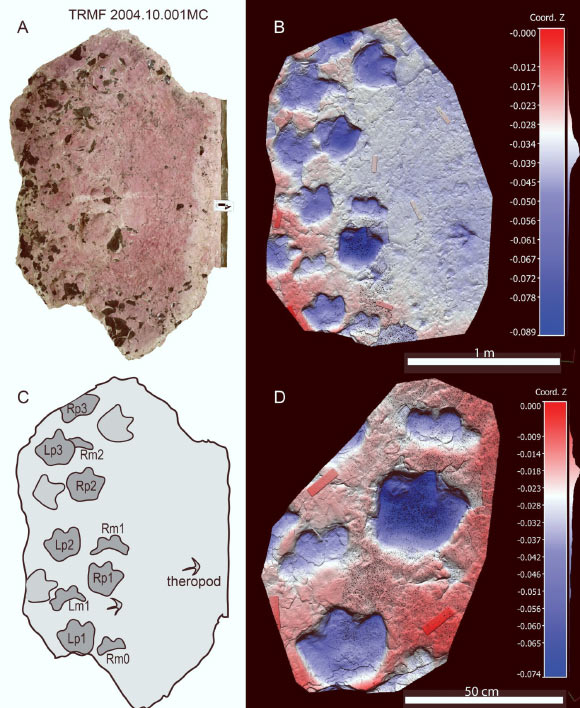Now Reading: 100-Million-Year-Old Armored Dinosaur Footprints Unearthed in Canada
-
01
100-Million-Year-Old Armored Dinosaur Footprints Unearthed in Canada
100-Million-Year-Old Armored Dinosaur Footprints Unearthed in Canada

Quick Summary
- Newly discovered dinosaur footprints in northeastern British Columbia and northwestern Alberta have been assigned to the ichnospecies Ruopodosaurus clava.
- these footprints confirm the presence of ankylosaurid dinosaurs in North America during the mid-Cretaceous period (about 100-94 million years ago).
- Ankylosaurids are characterized by their three-toed feet and sledgehammer-like tail clubs, distinguishing them from nodosaurids, which have flexible tails and four toes.
- The discovery indicates ankylosaurids coexisted with nodosaurids in Canada’s Peace region during this era despite a gap in skeletal fossils from 100-84 million years ago.
- The tracks suggest that Ruopodosaurus clava was a spiky, armored dinosaur approximately 5-6 meters long with a stiff tail or tail club.
- Scientists highlighted Tumbler Ridge as an important site for understanding dinosaur evolution and noted its unique association with ankylosaurs since the discovery of an ankylosaur trackway there in 2000.
Indian Opinion Analysis
The discovery of Ruopodosaurus clava provides critical insight into paleontological gaps regarding mid-Cretaceous life forms. For India, these findings reinforce the global importance of fossil research as tools for evolutionary studies applicable to different ecosystems. With ongoing paleontological initiatives at sites like India’s Balasinor dinosaur Fossil Park,such breakthroughs offer valuable comparative frameworks. As India modernizes infrastructure near fossil-rich areas like Gujarat or Madhya Pradesh, balancing conservation efforts could be pivotal to preserving unexplored prehistoric knowledge akin to Canada’s Peace Region success story.
























